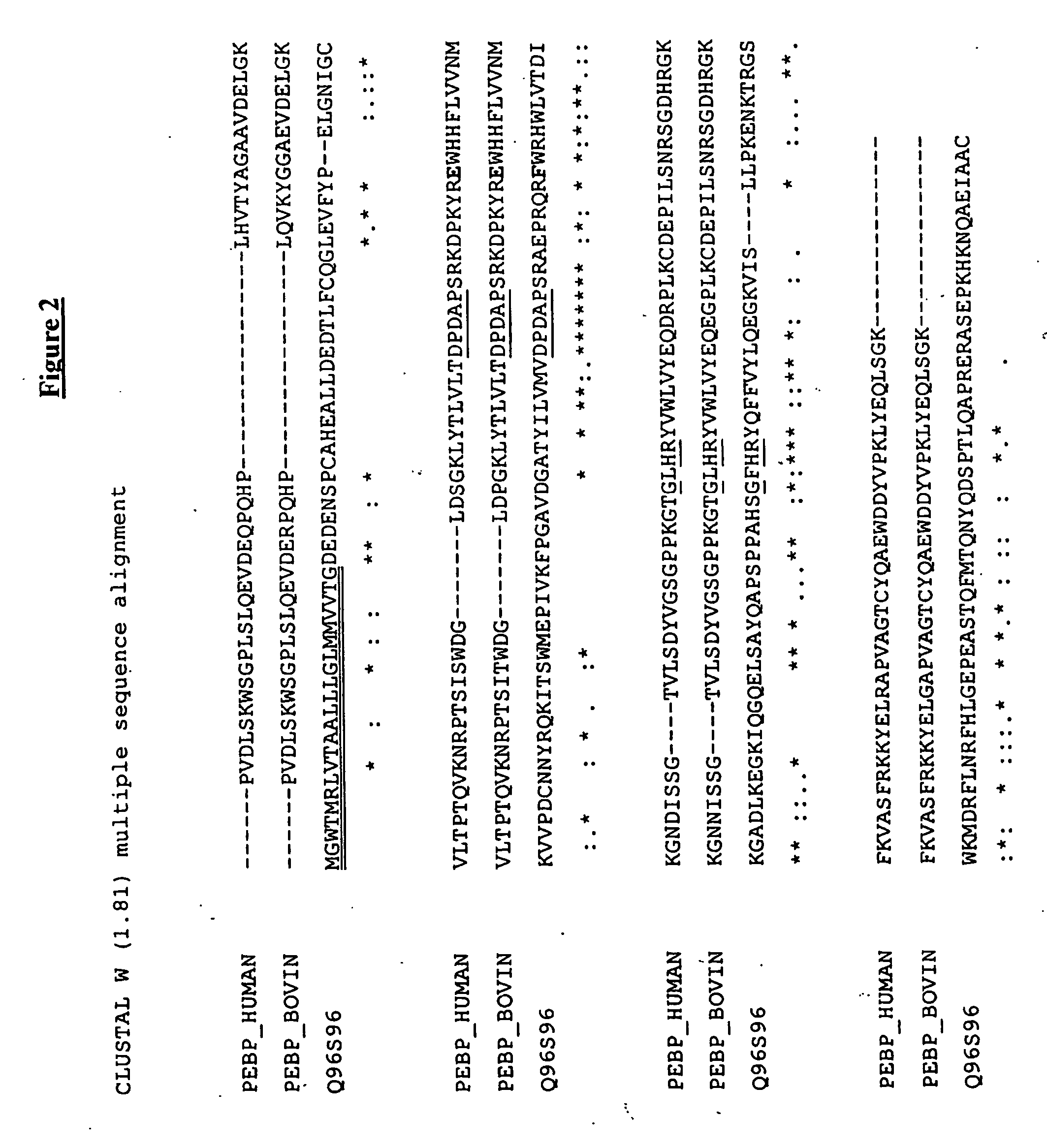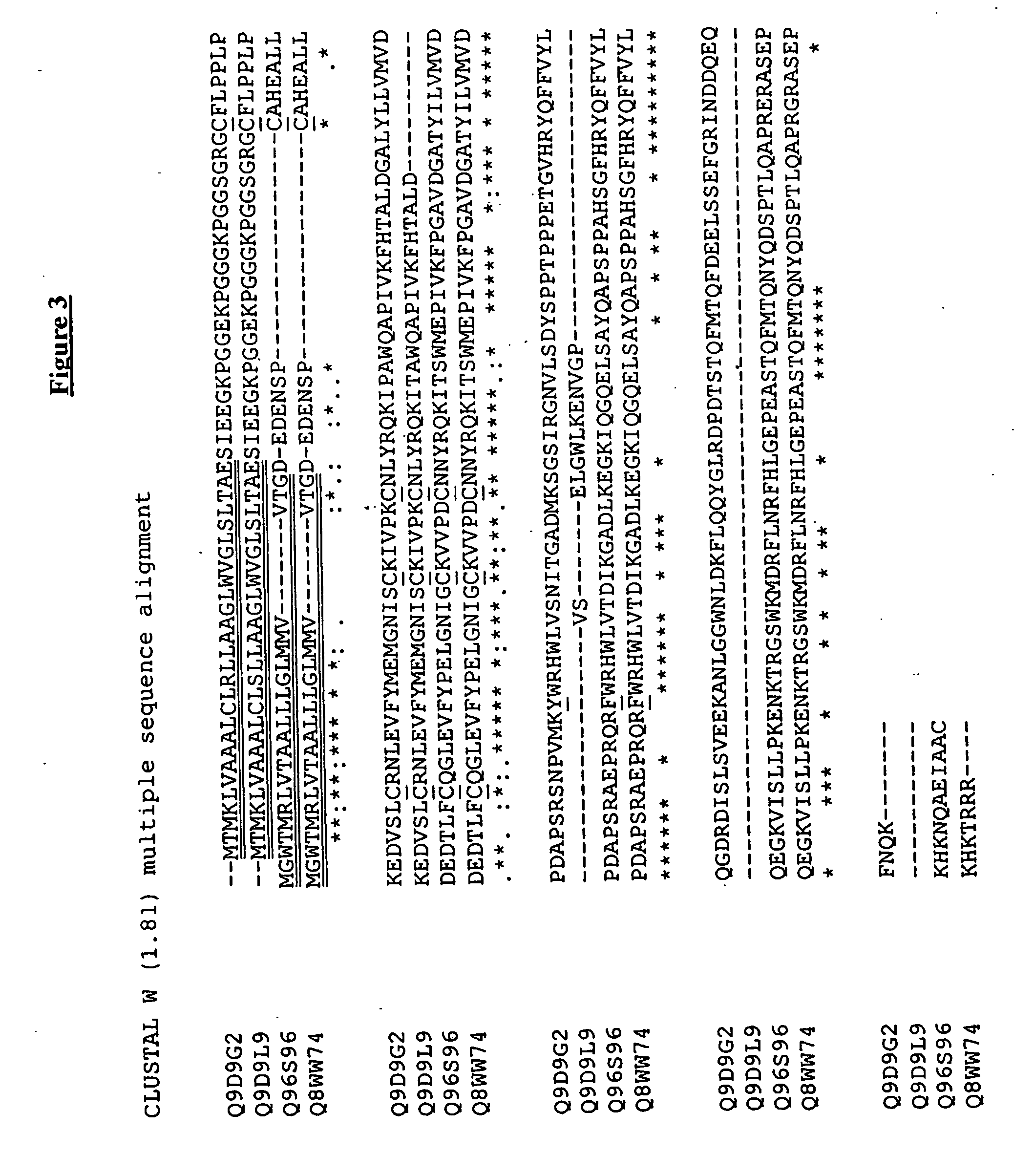Secreted polypeptide species associated with cardiovascular disorders
a secreted polypeptide and cardiovascular disease technology, applied in the field of active polypeptide species, can solve the problems of rapid decline of lack of oxygen supply in the tissues of organs, and major health risks of cardiovascular disease, and achieve the effects of increasing the solubility, stability and circulating time of the polypeptide, and reducing the risk of developing a disorder
- Summary
- Abstract
- Description
- Claims
- Application Information
AI Technical Summary
Benefits of technology
Problems solved by technology
Method used
Image
Examples
example 1
Characterization of CPP Levels in Experimental and Control Populations
[0260] Subjects enrolled in the Duke Databank for Cardiovascular Disease were selected on the basis of coronary artery disease (CAD). A total of 241 CAD patients and control individuals were further matched for gender, age, and ethnicity and individuals with plasma abnormalities were excluded. A set of 53 CAD patients and a set of 53 control individuals were established. Six liters of plasma were pooled from each set. An aliquot of plasma was retained from each individual, thus allowing a positive result in the pooled sample to be confirmed for each member of the population. Such confirmation is valuable to erase possible confounding effects of an individual with an aberrant level of a specific polpeptide that is not related to a cardiovascular disorder. Two and a half liters of pooled plasma from each population was subjected to separation by multiple chromatography steps according to the Microprot.™ process as ...
example 2
The CPPs of the Invention Possess a PEBP-Like Functional Domain
[0295] The C-terminal region of the CPPs of the invention is predicted to fold into the canonical active site structure of the PEBP proteins. This structure forms a ligand binding pocket at one end of the central beta sheet (Banfield et al., supra). In FIG. 2, the amino acids important for PEBP activity are shown in bold:. These include the Asp-Pro-Asp-x-Pro motif and the Gly-x-His-Arg motif. Both motifs are universally conserved among PEBP proteins (Banfield et al., supra) and, as shown in FIG. 2, the CPPs of the invention. Furthermore, the conserved and unusual cis-conformation Glu83 (PEBP_HUMAN numbering), is highlighted. This residue is likely involved in membrane binding. Glu83 is replaced in the proteins of the invention by a Phe residue. In the mouse homologs of the CPPs of the invention, the homologous position is a Tyr residue (see FIG. 3).
example 3
The CPPs of the Invention Possess a Secretion Signal Peptide and a Conserved, Specific N-terminal Domain
[0296] The N-terminal amino acids of the CPPs correspond to a very clear signal for secretion and a conserved repetition of 4 Cys residues (see FIG. 3). Computer modeling of the first 67 residues of SEQ ID NO:2 using the Rosetta software package (Rosetta 1.2 (Bonneau,R., et al. (2001), Proteins, Suppl5, 119-126) predicts a pattern of disulfide bridges that folds into a stable tertiary structure (FIG. 4).
PUM
| Property | Measurement | Unit |
|---|---|---|
| cardiovascular disorder | aaaaa | aaaaa |
| mass spectrometry | aaaaa | aaaaa |
| disorder | aaaaa | aaaaa |
Abstract
Description
Claims
Application Information
 Login to View More
Login to View More - R&D
- Intellectual Property
- Life Sciences
- Materials
- Tech Scout
- Unparalleled Data Quality
- Higher Quality Content
- 60% Fewer Hallucinations
Browse by: Latest US Patents, China's latest patents, Technical Efficacy Thesaurus, Application Domain, Technology Topic, Popular Technical Reports.
© 2025 PatSnap. All rights reserved.Legal|Privacy policy|Modern Slavery Act Transparency Statement|Sitemap|About US| Contact US: help@patsnap.com



